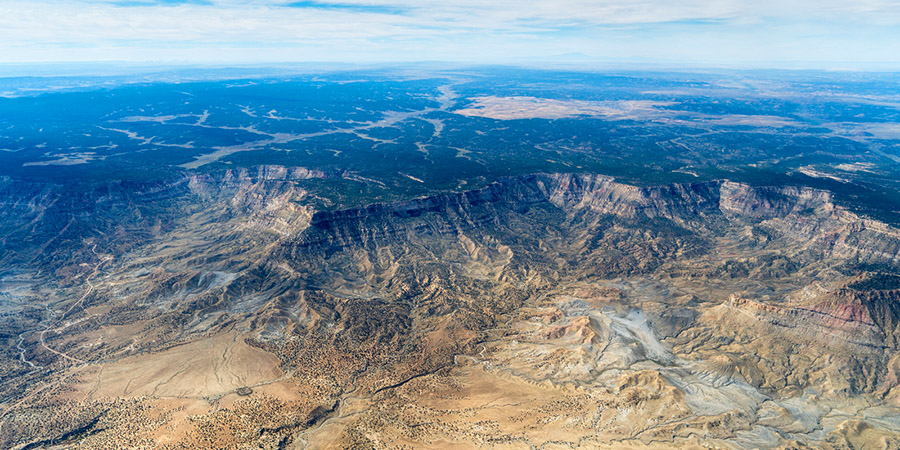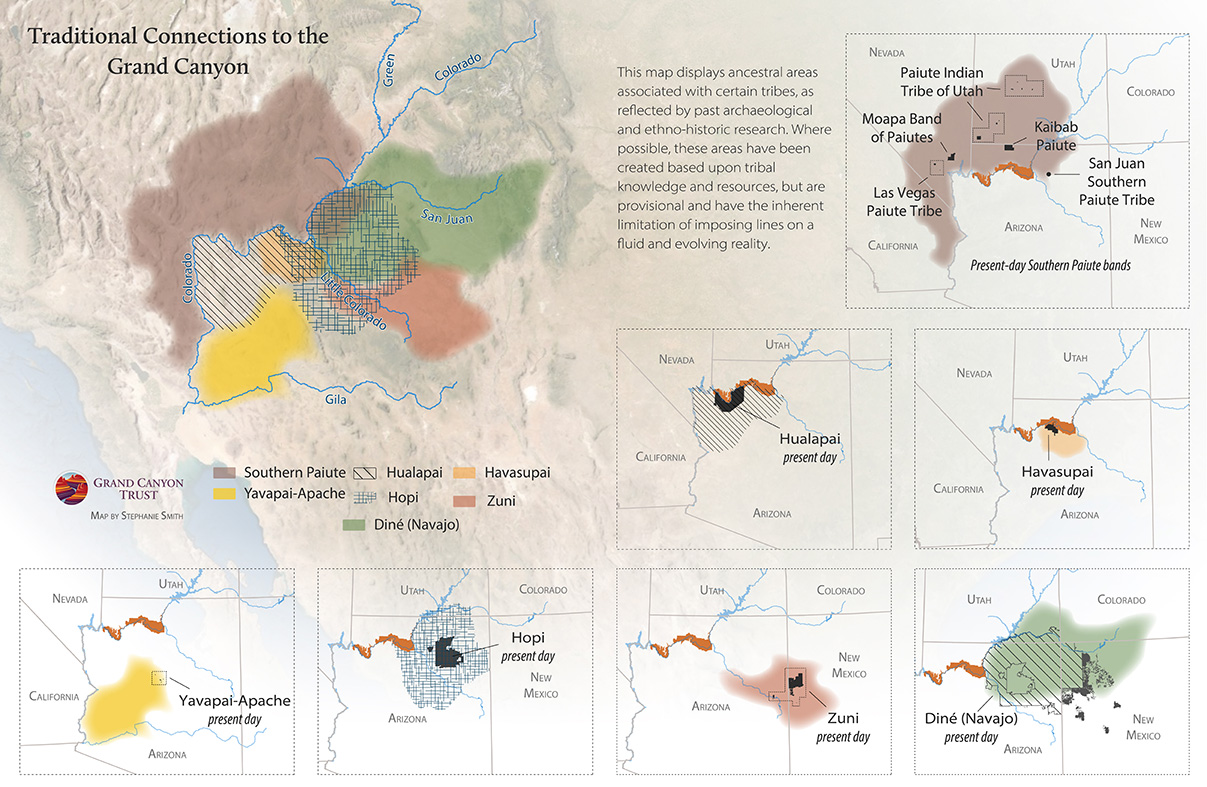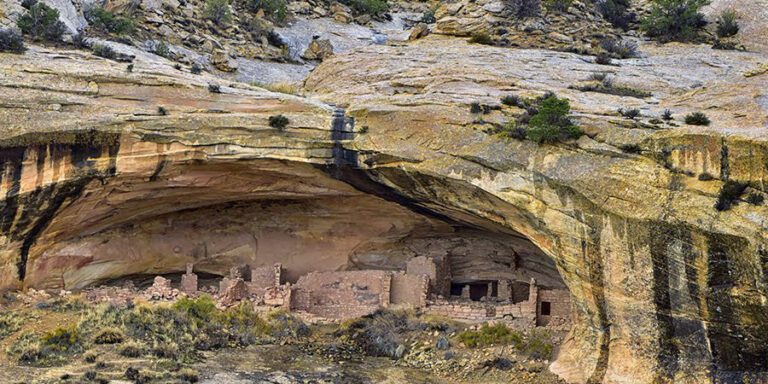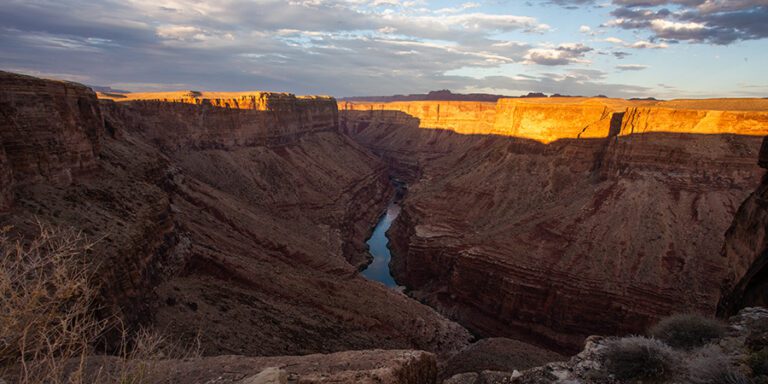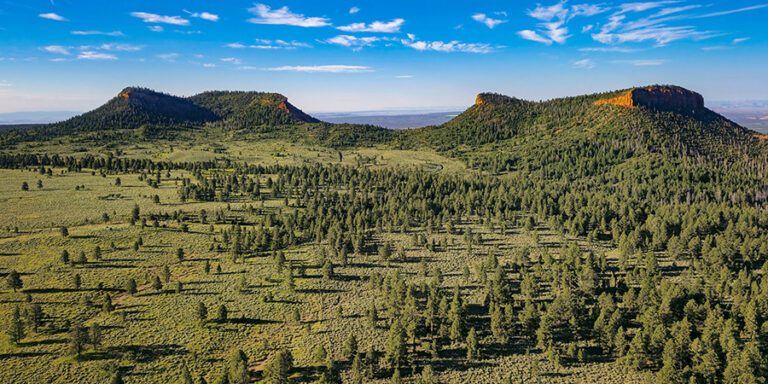
Update: On February 15, 2024, the Federal Energy Regulatory Commission (FERC) denied preliminary permit applications for seven pumped storage hydroelectric projects proposed on Navajo Nation land. Read more
In the year since Massachusetts-based developer Nature & People First proposed three massive hydroelectric projects on Black Mesa near Kayenta, Arizona, on Navajo Nation land, opposition has grown. The Navajo Nation, the Hopi Tribe, and local Native communities with strong ties to the area, including Black Mesa, Kayenta, and Coppermine, all strongly oppose the dams.
The three Black Mesa dam projects (North, East, and South) would include nine reservoirs and use tremendous amounts of water, likely pumped from groundwater, the Colorado River, or the San Juan River.
In total, the proposed reservoirs for all three projects could use over 126 trillion gallons (450,000 acre-feet) of water, which is more than the entire Navajo Nation currently uses in a year, according to best estimates.
Navajo Nation government opposes Black Mesa dams
Recent resolutions and statements of opposition reflect mounting concerns over using water for these proposed dams. The Navajo Nation has formally opposed all three projects, citing concerns about lack of consent, impacts on sensitive species, and harm to cultural sites.
According to Tó Nizhóní Ání (“Sacred Water Speaks”), a grassroots group that works to protect Black Mesa’s water from industry use and waste, 19 Navajo Nation chapters (local governments) have passed resolutions opposing the Black Mesa hydroelectric proposals.
A flurry of hydroelectric projects on Native lands indicates a need for reform

In addition to the three Black Mesa proposals, at least five other hydroelectric projects across the Navajo Nation are awaiting preliminary permits from the Federal Energy Regulatory Commission, the federal agency that licenses non-federal hydropower projects.
Developers have applied for these permits for projects that would be built on Navajo Nation land. Many of them could pump groundwater to fill their massive reservoirs, all without the Navajo Nation’s consent. Should they receive preliminary permits, their developers will be first in line to secure a 50-year license to operate these water-intensive projects.
Meanwhile, the Diné (Navajo) families of the grassroots group Save the Confluence continue to fight against the Big Canyon Dam proposed near the Little Colorado River on Navajo Nation land. Big Canyon Dam was proposed in 2020 and is also awaiting a preliminary permit from the Federal Energy Regulatory Commission. This hydroelectric project would be located in and above a tributary wash just over five miles from the confluence of the Little Colorado River and Colorado River in the Grand Canyon, an area of deep significance to many tribes. The Big Canyon project would use 17 billion gallons of precious groundwater to fill open-air reservoirs that could lose 3-4 billion gallons a year due to evaporation.
The Save the Confluence families are pursuing a first-of-its-kind Navajo Nation sacred site designation of the confluence area to discourage development threats like the Big Canyon Dam. At the heart of the issue is the lack of local consent and consultation since current dam licensing rules do not require tribal input or permission when a developer applies for a preliminary permit on tribal lands.
Tribes aren’t invited to the table when dam projects are first proposed on their lands
The recent Black Mesa and Big Canyon dam proposals highlight a major flaw in dam permitting rules: an outside developer can propose a project on a tribe’s lands without first asking the tribe and local Native communities for permission.
Worse still, the federal government can issue a preliminary permit for projects within the sovereign borders of tribal land even when it is against the tribe’s wishes. And if other Native tribes have connections to that land, as is common around the Grand Canyon, the developer only needs to consult them years later.
The antiquated regulations that guide hydroelectric dam permitting across the United States and tribal reservations are in desperate need of reform. That’s why it’s important to support Save the Confluence, tribal governments, and local tribal communities in their efforts to pursue reform of the Federal Energy Regulatory Commission rules that govern the preliminary permitting process.
These changes would grant tribes additional authority to assert their positions early and would apply to projects proposed on tribal lands across the country.
How you can help
Because of Tó Nizhóní Ání’s on-the-ground efforts, Navajo communities have been able to make informed decisions at the community level, where it is most critical. You can help Tó Nizhóní Ání continue its important water protection work by donating and by subscribing Tó Nizhóní Ání’s mailing list to stay up-to-date on efforts to protect Black Mesa.
Learn more about efforts to protect the Little Colorado River from destructive hydropower projects

